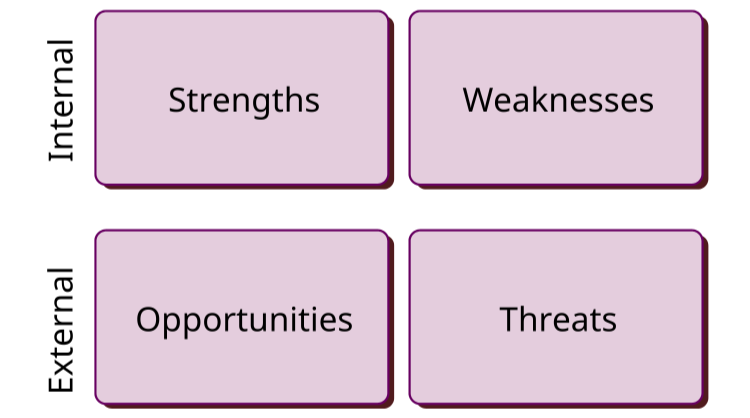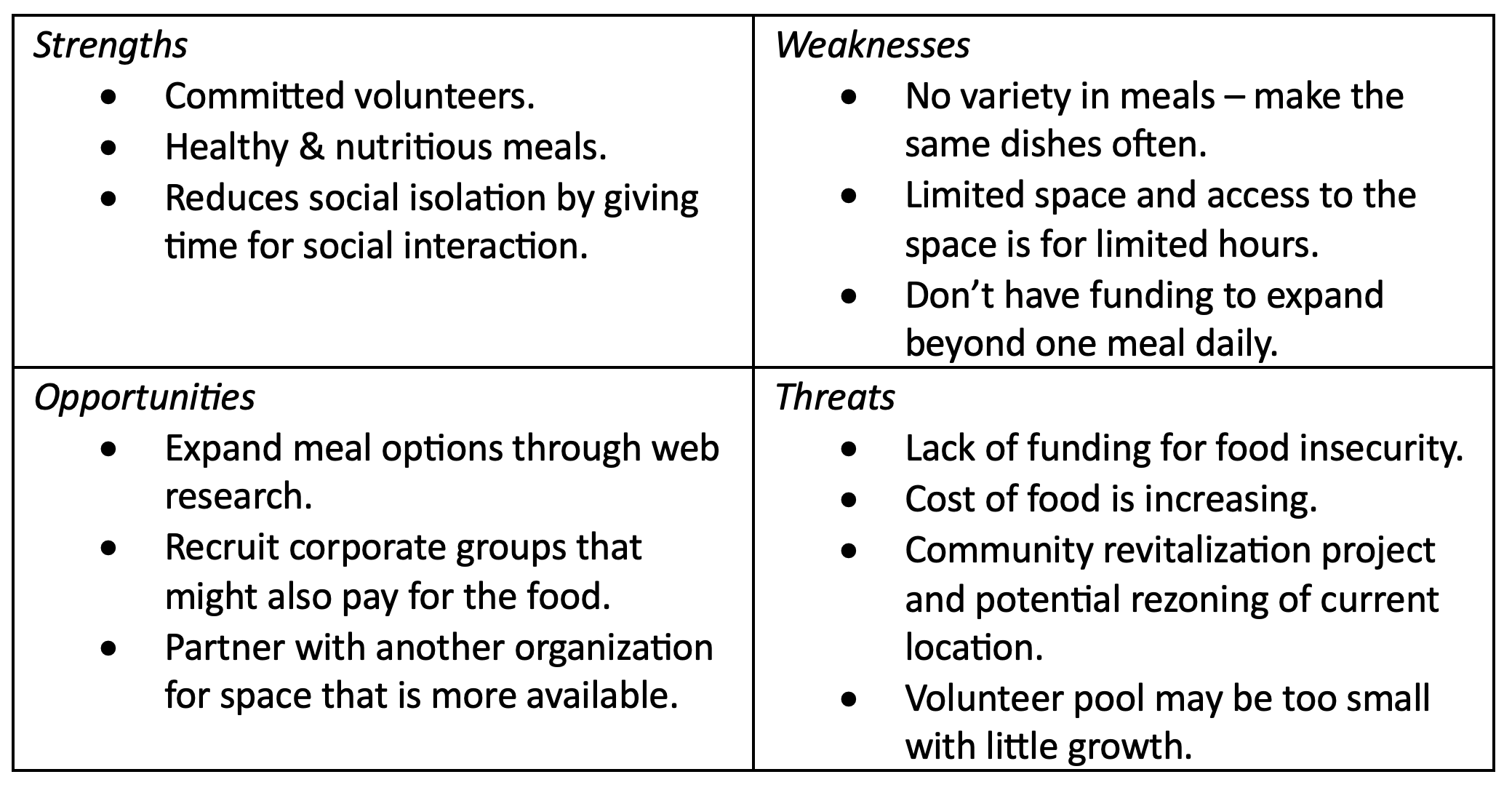SWOT Analysis: What Is It And How Do I Use It?
July 2023
This article is rated as:
Have you ever participated in a strategic planning session or helped develop or start a new program? A SWOT is a tool commonly used at the beginning of a new venture or as part of a new strategic planning process. The real value in a SWOT analysis is in the gathering of perspectives across and outside of the organization to better reveal potential obstacles and find the less obvious solutions. It is frequently used because it is simple to understand. A SWOT in evaluation could be used as a data collection tool or to present evaluation findings and create recommendations.
What is a SWOT analysis?
SWOT stands for Strengths, Weaknesses, Opportunities, and Threats. SWOT started as a business and marketing tool that is now commonly used in strategic planning sessions. It is often used at the organizational level but can be used to assess a program or project. A SWOT is normally depicted as a 2 x 2 grid or matrix, like the one below.
Strengths and weaknesses examine what is going on internally. These are the areas that the organization can control and change. Strengths look at what the project excels at and is good at doing. Weaknesses are of course the other side to that coin; weaknesses look at what the project is not good at. These could be areas to improve. Evaluation findings can uncover unexpected strengths and weaknesses that those who are internal to the project just might not be able to see.
Opportunities and threats are external facing. Opportunities look at the current environment that the organization exists in and where it could grow to fill service gaps in the community or ways the organization can expand. In evaluation findings, opportunities might include external factors that could support identified program improvements or external context that has led to positive program findings. Threats look at the current environment to see areas where the growth and sustainability of the organization might experience barriers to change or be negatively impacted by external context.
How to do a SWOT analysis
I have most often taken part in a SWOT analysis in a workshop format, where someone facilitates the conversation, gathering feedback and insight from people with a vested interest in the project. However, a SWOT could also be a useful way to design interview questions that look at internal and external factors impacting a project or to structure qualitative analysis from interview findings.
When gathering people to complete a SWOT analysis, consider who you are inviting. Is this an exercise with just the evaluation advisory committee or is this an opportunity to expand beyond that group to gain outside perspectives? Should leadership, frontline staff, or other groups with vested interests be included?
When doing an in-person SWOT analysis, I like the use of flipcharts. I would normally have Strengths, Weaknesses, Opportunities, and Threats placed around the room. If doing a virtual SWOT analysis virtually, some tools that could be useful include Canva charts, Microsoft OneNote, Whiteboard, or maybe PowerPoint with a slide for each factor. Use the tools that you already have access to, in order to gather the insights of your group.
There are a few things to keep in mind when facilitating a SWOT analysis. This is meant to be participatory, and everyone in the group is encouraged to give their insights. This can be done through a full group discussion of each of the factors, or depending on group literacy, sticky notes could be given to each participant to write their own ideas onto and stick onto the sheet with the corresponding factor.
When planning for your group, create guiding questions that are relevant to your project and use them to help stimulate conversation. Some questions to help facilitate the discussion:
What types of activities does our organization do best?
Where is our biggest success?
What type of skills do we have?
Where are we most effective?
Who are our strongest allies?
What processes do we need to improve?
What assets do we need to build or get?
What gaps do we have in skills?
How do clients perceive our organization?
How is technology changing how we deliver our activities?
Are there any funding changes that may affect our ability to continue running the organization's activities?
What are current donor trends and how might those affect the organization?
These are just a few ideas of questions that can help to get some ideas flowing, but in no way is this an exhaustive list.
Once the group has completed listing their SWOT analysis, it is time to set priorities. Each group may do this a bit differently, maybe each member individually ranks their priorities. Again, this could be done with sticky notes with numbers one to five and each group member places these numbers beside their priority areas. The group would then discuss and come to a consensus to define which items are priorities. It is possible to skip the individual prioritization, but I find that quieter group members tend to not speak up in the prioritization without having done the individual priorities first. These priorities would go into the completed SWOT matrix and are commonly listed in order of priority.
The following is an example of what a SWOT might look like for a small soup kitchen.
After priorities are set, an action plan or actionable recommendations are created to follow up and pursue these priorities. The SWOT matrix itself is not the goal but a tool to help set priorities. A SWOT is a simple tool to help set priorities for a project, program, or organization. A SWOT can help foster group ownership through involvement in SWOT analysis gathering. It can also be a great way to share information as it is easy to understand.




